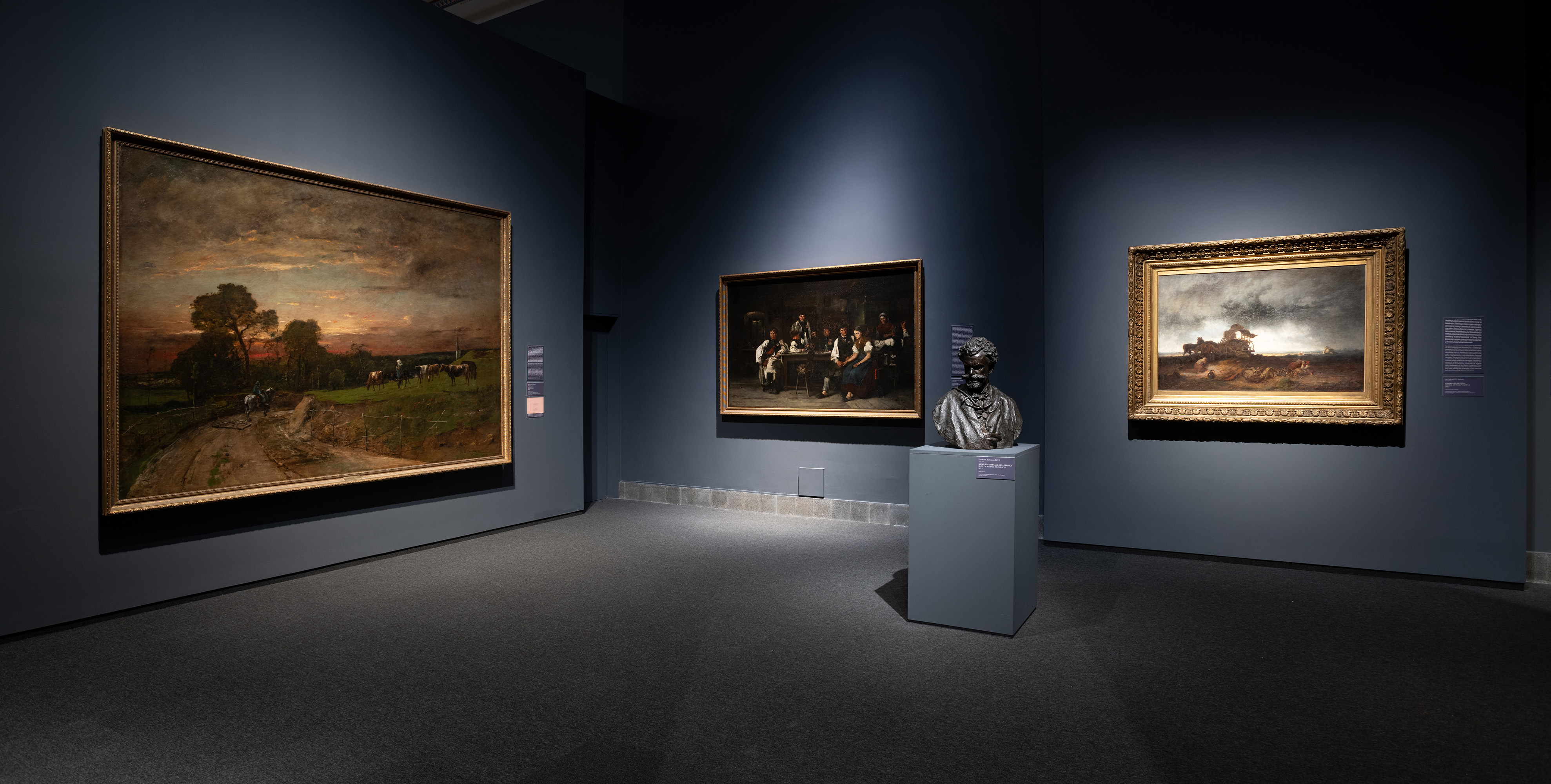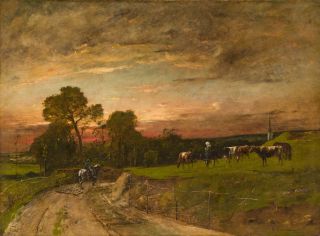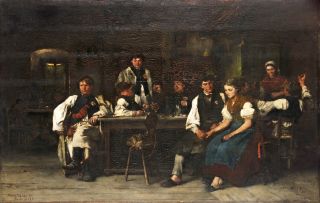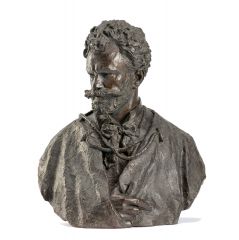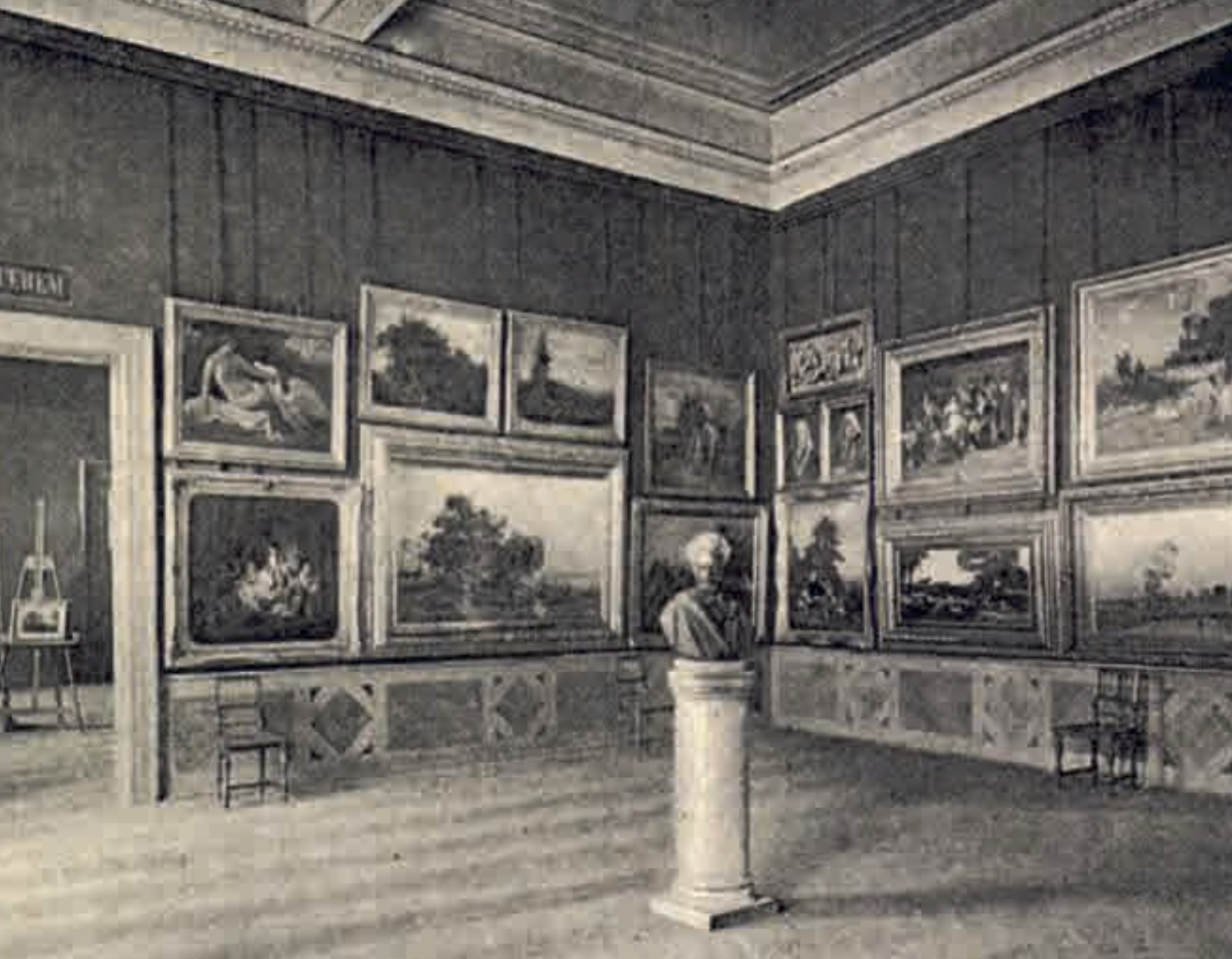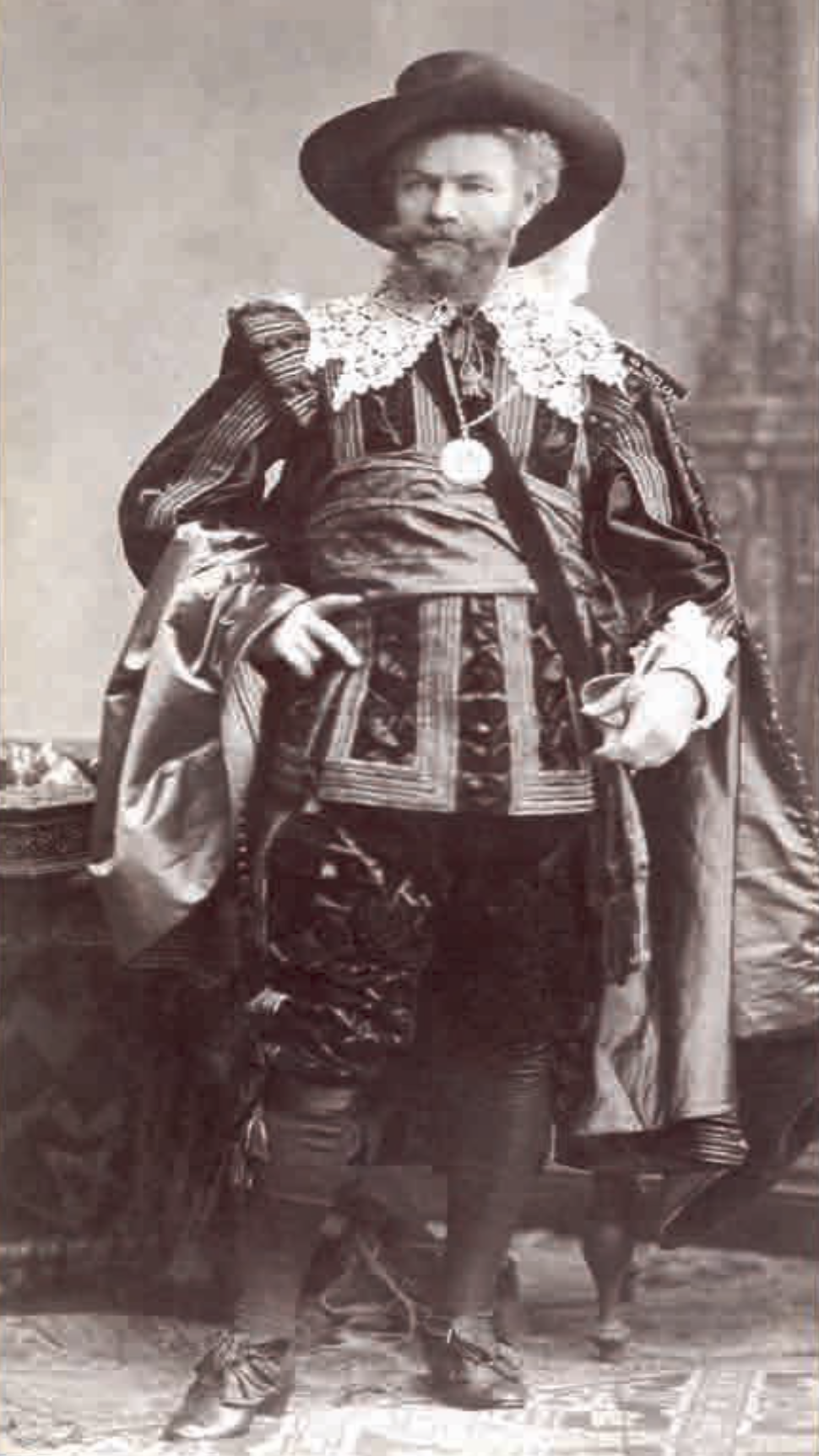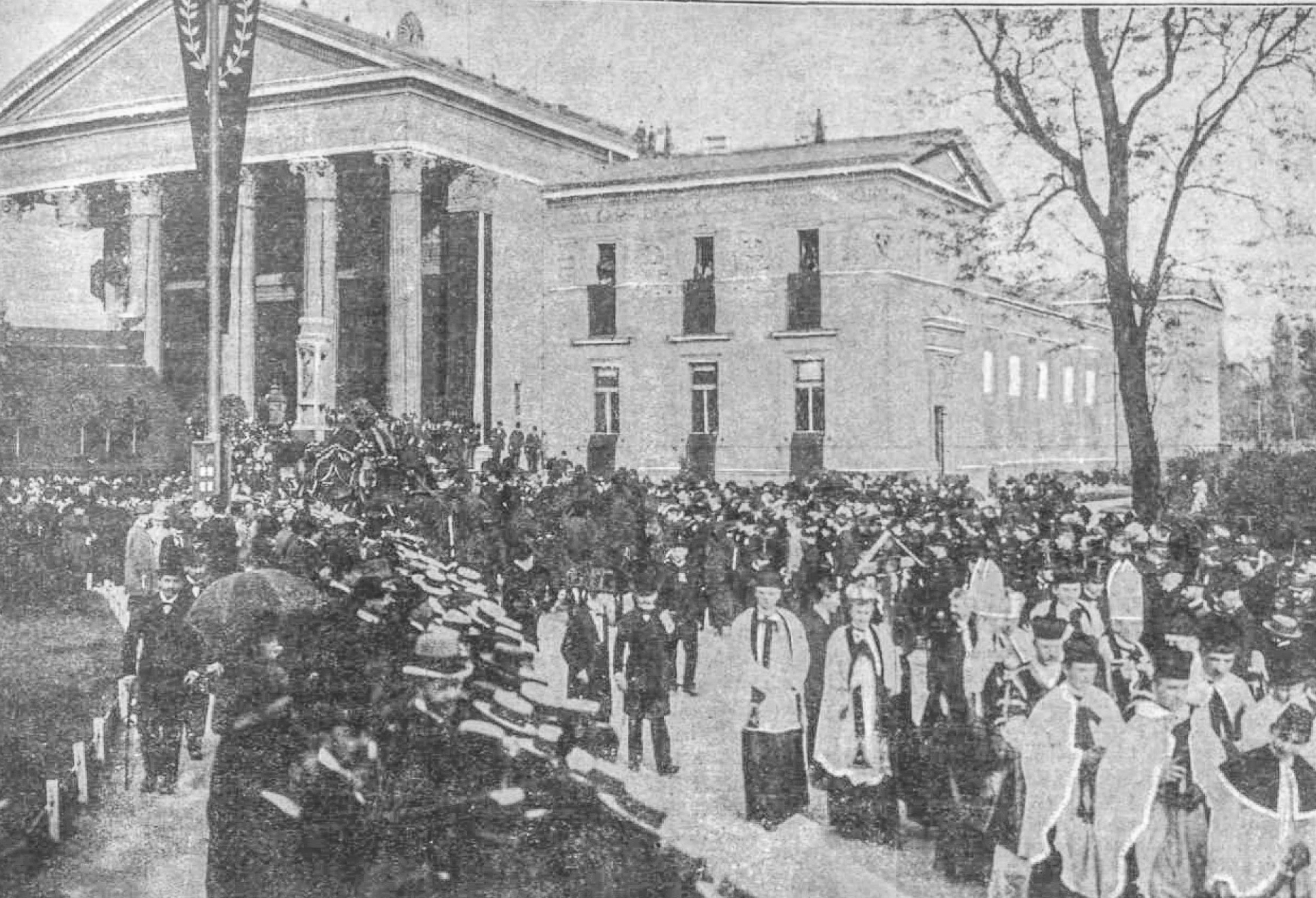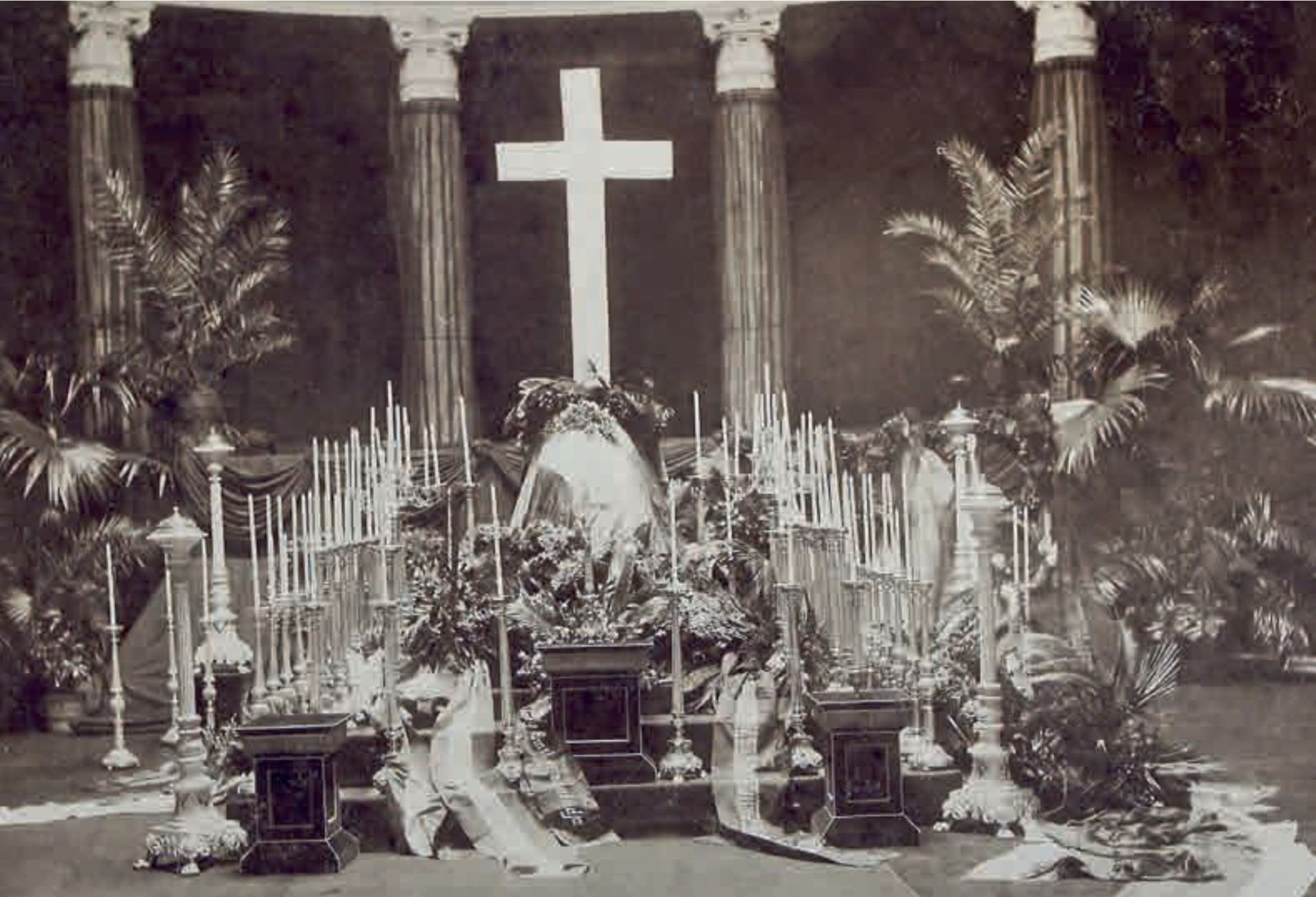The cult of Mihály Munkácsy in Hungary goes beyond that of any other Hungarian fine artist and is comparable to that of Sándor Petőfi in literature and Franz Liszt in music. The story of this cult emerged in parallel with his international success.
Munkácsy was still only in his mid-thirties when a room was named after him in the Hungarian National Museum, although for a long time this room contained just two of his paintings: Storm at the Puszta (1867) and Recruiting (1877), along with a bust of him by Friedrich Beer. There was also a Munkácsy Room in the Buda Palace in the first half of the twentieth century, where the biggest attraction was the painting Homewards.
One of the high points of the cult of Munkácsy was his 1882 visit to Budapest for the exhibition of Christ before Pilate. The thirty-eight-year-old artist was celebrated in a manner befitting a monarch: he was greeted by a distinguished reception, a cheering crowd of thousands, and a torchlight procession, and even a banquet and a costume ball were held in his honour. He was also awarded a silver laurel wreath by the Hungarian National Society of Fine Arts.
The cult of Munkácsy in Hungary culminated with the artist's funeral on 9 May 1900. Munkácsy's coffin lay on a catafalque in the Budapest Kunsthalle, and tens of thousands accompanied him on his final journey. His widow then ensured that the artist's bequest was returned to Hungary.
As an indication of the esteem in which the artist is held, six streets in Budapest are named after him, as are seven schools, over three hundred streets and roads, and two museums around the country, while the Munkácsy Prize is the most prestigious fine arts prize awarded by the Hungarian state. Statues of Munkácsy can be found in numerous cities. In recent decades, temporary exhibitions of Munkácsy's work in Hungary and throughout the Carpathian Basin have regularly attracted record numbers of visitors.
 Munkácsy
Munkácsy
